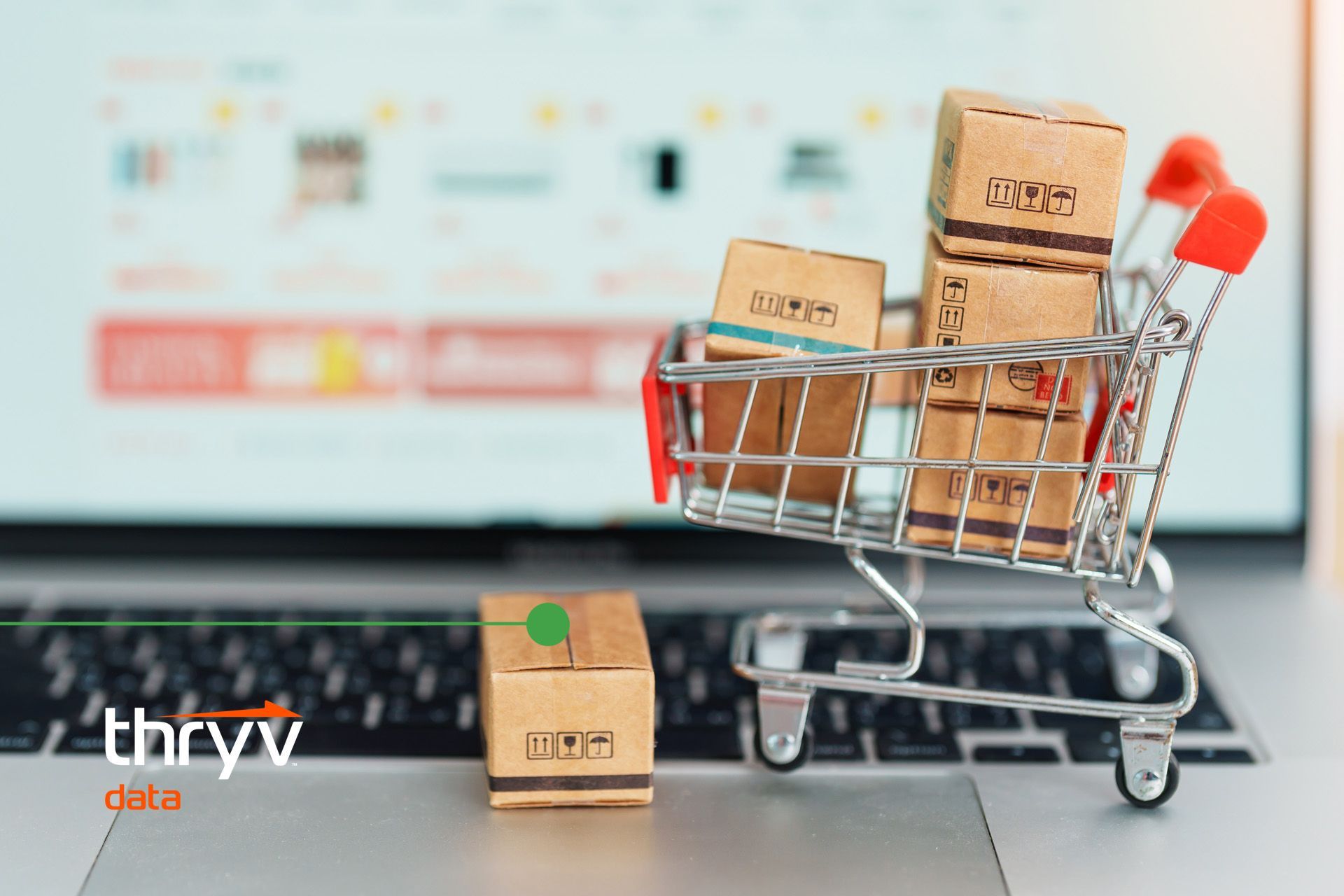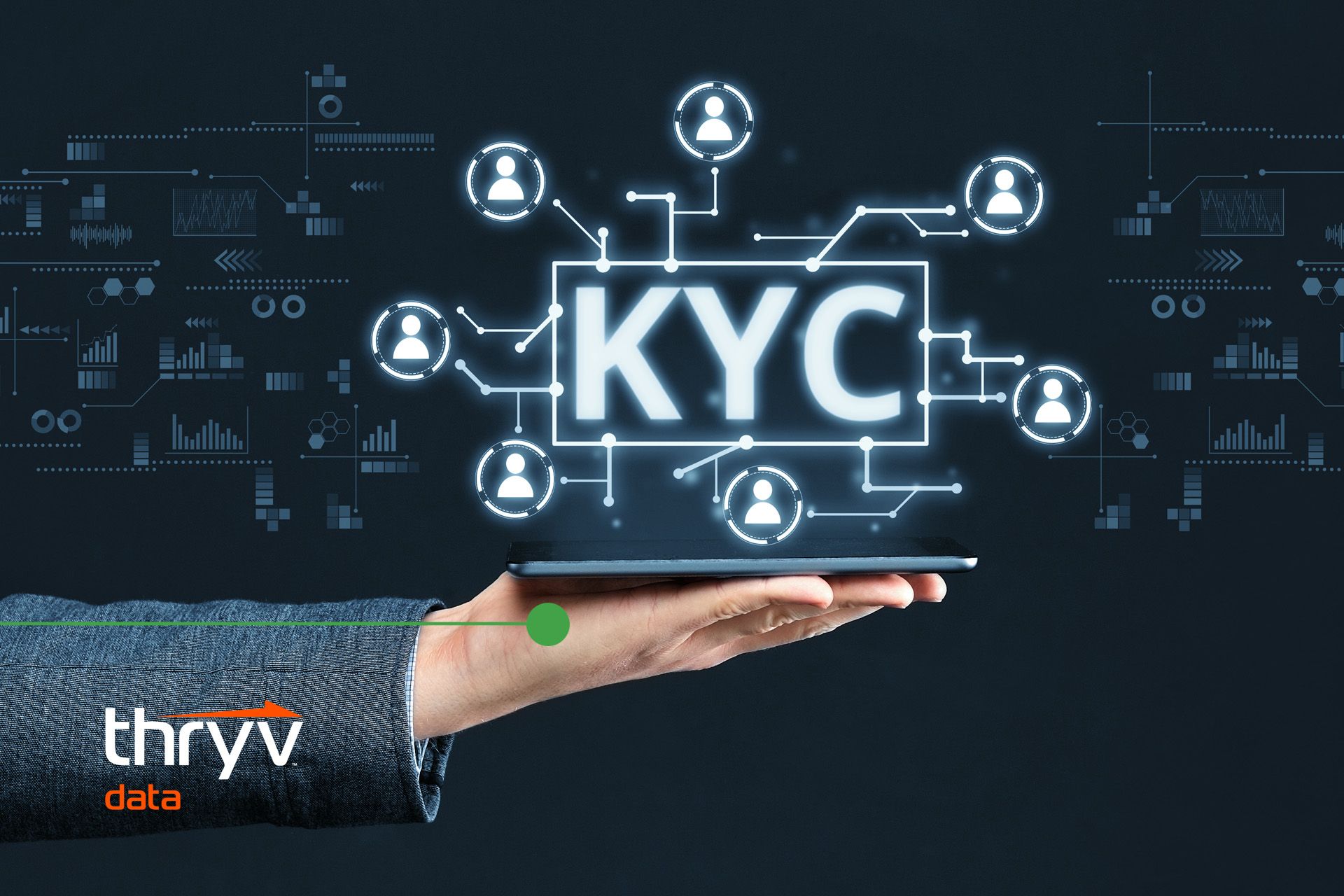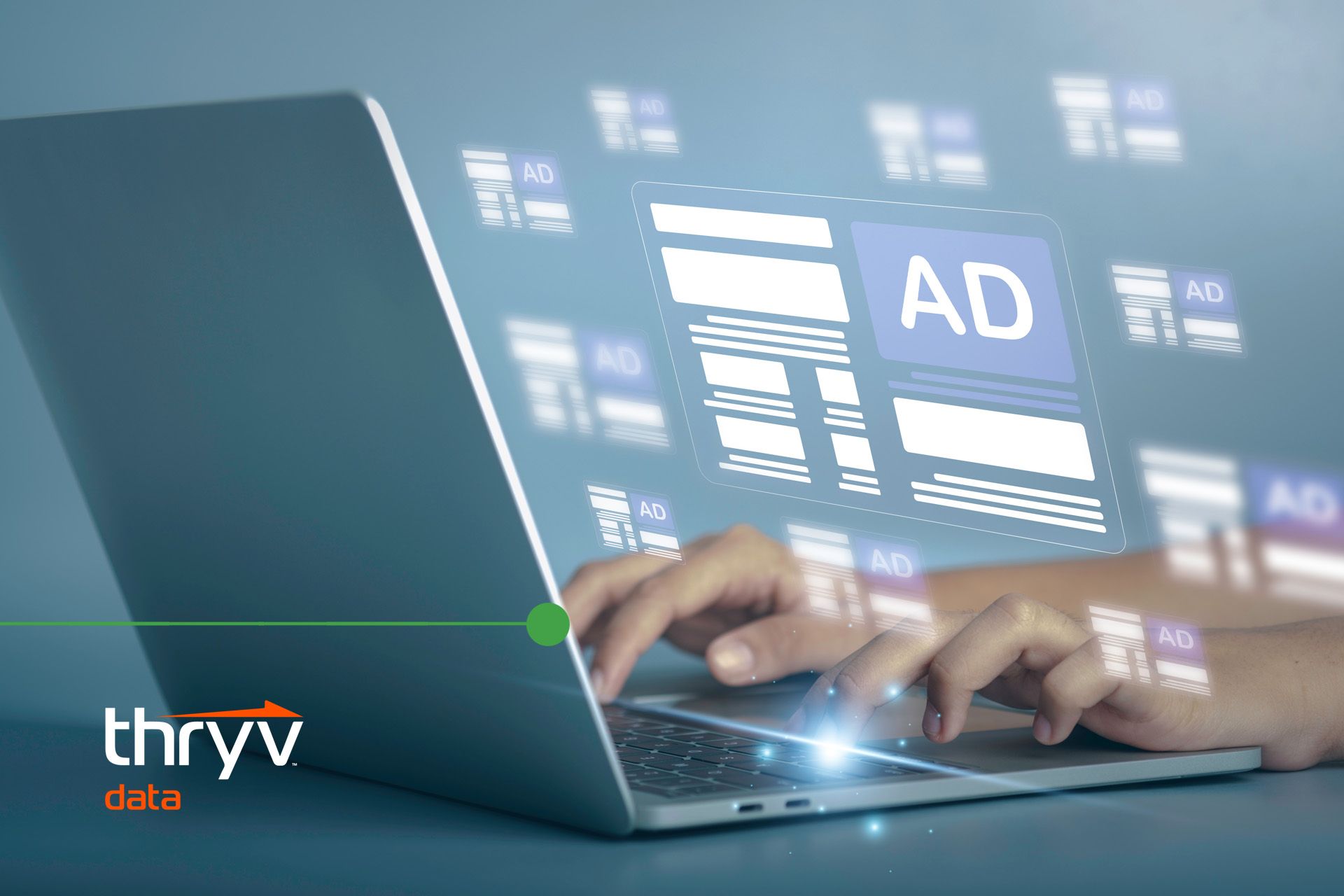Sensis Data Solutions is now known as Thryv Data. Our products, services and team still remain the same.
Contact thryvdata@thryv.com for any queries as we transition to Thryv.
The Dirty Secret of Data: Why Your Business Needs Data Cleansing Now More Than Ever
Introduction
Welcome to the digital era, where data reigns supreme, and businesses thrive on the information at their fingertips. In this fast-paced world, the significance of data in modern businesses cannot be overstated. Every decision, from product development to marketing strategies, is influenced by the insights derived from data analysis. It's the lifeblood that fuels innovation and drives growth, making it an invaluable asset for any organization.
However, in this data-driven landscape, there's a hidden problem that often goes unnoticed - data quality and cleanliness. Businesses are accumulating vast amounts of data, but not all of it is accurate, up-to-date, or reliable. Imagine building a towering skyscraper on a shaky foundation; similarly, using unclean data can lead to disastrous consequences. Data that is riddled with errors, duplicates, and inconsistencies can misguide decision-makers, resulting in poor choices and lost opportunities.
The Basics of Data Cleansing
A. Definition of Data Cleansing
Data cleansing, often referred to as data scrubbing or data cleaning, is the process of identifying and rectifying errors, inaccuracies, and inconsistencies in a dataset. It involves the thorough examination of data to detect and correct any anomalies, such as duplicate records, missing information, and outdated entries. Think of it as tidying up a cluttered room, but in the digital realm. The primary goal of data cleansing is to ensure that the data maintained by an organization is accurate, complete, and reliable. This meticulous process paves the way for better decision-making, improved operational efficiency, and enhanced data-driven strategies.
B. Importance of Clean Data
Clean data is the bedrock upon which informed decisions are made. It is the key to unlocking the full potential of data-driven endeavours. Imagine a car with a perfectly tuned engine but dirty fuel; it won't run efficiently. Similarly, in the world of business, data is the fuel that powers operations, and clean data ensures that this fuel is of the highest quality. When data is accurate, up-to-date, and devoid of errors, it inspires confidence in decision-makers and minimizes the risk of costly mistakes. Clean data also leads to a more efficient workflow, as employees can trust the information they work with, reducing the time wasted on manual corrections and investigations.
C. Common Data Quality Issues
Data quality issues can manifest in various ways, and they often lurk beneath the surface, unnoticed until they wreak havoc. Some common data quality problems include:
- Duplicate Entries: These occur when the same data is entered more than once in a dataset, leading to confusion and redundancy.
- Inaccurate Information: Data that is outdated, incorrect, or incomplete can mislead decision-makers and result in poor judgments.
- Inconsistencies: When data is not standardized across the organization, it can create confusion and hinder data analysis efforts.
- Missing Values: Gaps in data can disrupt operations and lead to incomplete insights.
- Data Decay: Over time, data can become stale or obsolete, making it less valuable for decision-making.
Data Impact on Business Performance
Data is the compass that guides decision-making in modern businesses. It provides the insights necessary to make informed choices and chart a course towards success. Whether it's determining market trends, understanding customer preferences, or optimizing supply chain operations, data-driven decisions are the driving force behind business performance. Clean, high-quality data ensures that these decisions are based on accurate information, reducing the element of risk and increasing the likelihood of favourable outcomes.
The repercussions of bad data can be felt in the bottom line of a business. Bad data leads to misguided decisions, operational inefficiencies, and costly errors. It's like setting sail without a map and hoping for the best. When decisions are based on inaccurate or incomplete information, it can result in waste of resources, missed opportunities, and even legal ramifications.
In the age of personalization, customer relationships are built on understanding and catering to individual needs. Clean data plays a pivotal role in this endeavour. When businesses have accurate information about their customers, they can provide tailored experiences, recommend products or services that align with preferences, and address concerns proactively. This leads to increased customer satisfaction, loyalty, and advocacy.
Data Cleansing Techniques
When it comes to data cleansing, businesses have two primary approaches at their disposal: automated and manual techniques. Automated data cleansing relies on software tools and algorithms to detect and rectify data errors and inconsistencies. It's a swift and efficient method, especially for large datasets, as it can process vast amounts of data in a relatively short time. However, it's crucial to fine-tune automated systems to ensure they align with your specific data quality requirements.
On the other hand, manual data cleansing involves human intervention to review, validate, and correct data. While it's more time-consuming and labour-intensive, manual cleansing is indispensable for complex data or situations where a human touch is required for accuracy. Many organizations opt for a combination of both automated and manual approaches to strike a balance between efficiency and precision, ensuring that their data remains clean and reliable.
Common Data Cleansing Tools
In the quest for clean and reliable data, the role of data-cleansing software cannot be overstated. These specialized tools are designed to streamline the often complex and time-consuming process of data cleansing. Whether you're dealing with customer databases, inventory records, or financial datasets, data cleansing software can be a game-changer. These tools offer a wide range of functions, from identifying and rectifying errors to ensuring data consistency and accuracy. They make it possible to automate many aspects of data cleansing, saving valuable time and resources.
Selecting the right data cleansing tool for your business is a critical decision. It requires a careful assessment of your specific needs, budget, and existing data infrastructure. Consider factors such as the size of your dataset, the complexity of data quality issues you encounter, and the level of automation you require. Moreover, think about the scalability and integration capabilities of the tool to ensure it aligns with your future growth plans.
Remember that the effectiveness of a data cleansing tool also hinges on the expertise of your team. Ensure that your staff is adequately trained to leverage the tool's full potential. Investing in the right data cleansing software is an investment in the quality and reliability of your data, which, in turn, can significantly impact your business's performance and decision-making capabilities.
Data Cleansing Best Practices
Successful data cleansing begins with a well-defined strategy. Before diving into the nitty-gritty of cleansing your data, take the time to create a comprehensive plan. Identify the goals and objectives of your data cleansing efforts. Determine which datasets need attention and prioritise them based on their impact on your business. Consider factors like data sources, data owners, and the frequency of data updates. A clear strategy serves as your roadmap, guiding you through the cleansing process and ensuring that you stay on track.
Data cleansing is not a one-time endeavour; it's an ongoing process. Once you've cleaned your data, it's crucial to implement continuous monitoring and maintenance practices. Set up automated alerts to flag potential data quality issues as they arise. Regularly review and update your data quality standards to adapt to changing business needs. Assign data ownership roles and responsibilities within your organization to ensure that someone is accountable for data quality. By treating data cleansing as a continuous effort, you can maintain the integrity of your data and reap its benefits consistently.
The ROI of Data Cleansing
Investing time and resources in data cleansing isn't just a necessary expense; it's a strategic investment that can yield substantial returns. Calculating the return on investment (ROI) of data cleansing involves assessing the benefits it brings compared to the costs involved. Start by quantifying the expenses associated with data cleansing tools, personnel, and any other resources used in the process. Then, consider the tangible benefits, such as reduced operational costs, improved decision-making, and enhanced customer relationships. By comparing these costs and benefits, you can determine the ROI of your data cleansing efforts, providing a clear picture of the value it adds to your business.
One of the most tangible ways data cleansing delivers ROI is by saving your business money. Clean data minimises the risk of costly errors and inefficiencies. For instance, accurate customer information ensures that marketing campaigns target the right audience, reducing marketing spend on irrelevant leads. Clean data also aids in inventory management, preventing overstocking or stockouts that can lead to financial losses. Moreover, by streamlining business processes and reducing the time spent on manual data corrections, data cleansing directly impacts your operational efficiency and cost-effectiveness.
Getting Started with Data Cleansing
Embarking on a data cleansing journey begins with a critical step: assessing your data quality. This involves a thorough examination of your existing datasets to identify areas of concern. Look for common data quality issues like duplicates, inaccuracies, and inconsistencies. Determine the sources of your data and assess their reliability. This initial assessment provides a clear picture of the scope of the data cleansing effort required. Remember, knowledge is power, and understanding the state of your data is the first step towards making it cleaner and more reliable.
Data cleansing is a collaborative effort, and assembling the right team is essential. Depending on the size and complexity of your data, your team may include data analysts, data scientists, database administrators, and IT professionals. Assign clear roles and responsibilities and ensure that team members are well-versed in data cleansing techniques and tools. Effective communication within the team is key to success, as it ensures that everyone is on the same page and working towards a common goal.
Overcoming Data Cleansing Challenges
One of the primary challenges you'll encounter on your data cleansing journey is resistance to change. Many organizations are accustomed to their existing data processes and may be hesitant to disrupt them. Employees might be resistant to adopting new tools and procedures, fearing they will add complexity to their workflow. To overcome this challenge, it's crucial to emphasize the benefits of data cleansing and communicate the positive impact it will have on daily operations. Provide training and support to help your team transition smoothly and highlight how clean data can make their jobs more efficient and effective.
Data security is a paramount concern for any organization, and data cleansing can raise legitimate security worries. Sharing and processing data, even for the purpose of cleaning, can be perceived as a risk. To address this challenge, implement robust data security measures. Ensure that data is encrypted during transmission and storage, and limit access to only those who need it. Collaborate closely with your IT and cybersecurity teams to establish a secure data cleansing process that complies with relevant regulations and safeguards sensitive information.
Data Cleansing vs. Data Enrichment
Data cleansing and data enrichment are two distinct but interrelated strategies that play a crucial role in data management. Data cleansing focuses on the identification and rectification of errors and inconsistencies in existing datasets. It's about cleaning the data you already possess, ensuring it is accurate, complete, and reliable. On the other hand, data enrichment is the process of enhancing your data by adding valuable, external information to it. This additional information can include demographic data, social media profiles, purchase history, and more. Data enrichment expands your dataset, providing deeper insights and a more comprehensive view of your customers or prospects.
The decision to cleanse or enrich your data depends on your specific goals and the condition of your data. If your existing data is plagued by duplicates, inaccuracies, and inconsistencies, data cleansing should be your first priority. Clean data forms a solid foundation for accurate decision-making and analysis. Once your data is clean, you can then consider data enrichment to supplement it with additional insights. Enrichment becomes particularly valuable when you aim to gain a deeper understanding of your customers, personalize marketing campaigns, or identify new market segments. The key is to strike a balance between cleansing and enriching, tailoring your approach to the needs of your business.
Conclusion
In the fast-paced and data-driven landscape of the modern business world, the significance of data cleansing cannot be emphasized enough. It's the process that transforms raw data into a valuable asset, shaping the decisions that drive your business forward. As we recap the journey through the world of data cleansing, we're reminded of its pivotal role in ensuring data accuracy, reliability, and completeness. Clean data is the compass that guides decision-making, the shield against costly errors, and the bridge to building trust with your customers.
The time for businesses to act is now. The benefits of data cleansing are not merely theoretical; they are tangible and impactful. From reducing operational costs to fostering customer relationships, clean data delivers a compelling return on investment. It's an essential step towards achieving business success in the data-driven age.
As we conclude this exploration, let us encourage every business, regardless of size or industry, to embrace data cleansing as a strategic imperative. In doing so, you'll unlock the true potential of your data, making it a powerful ally in your pursuit of growth, innovation, and excellence. The road to cleaner data is the road to a brighter future for your business.
Book a demo or chat with us now!
Thank you for contacting Thryv Data.
One of Our Data specialists will reach out to you as soon as possible.
Oops, there was an error sending your message.
Please try again later. or email us at ThryvData@Thryv.com











